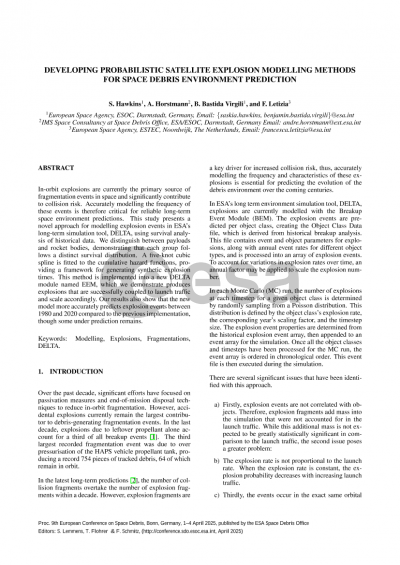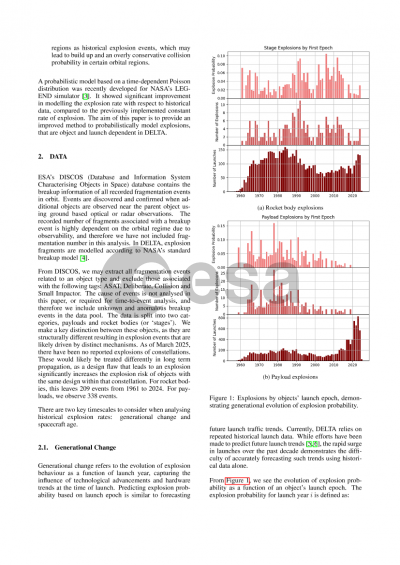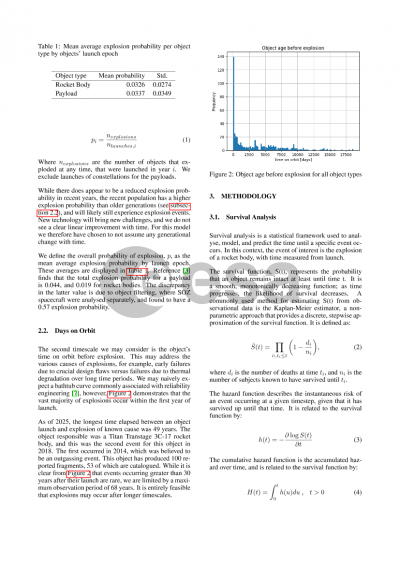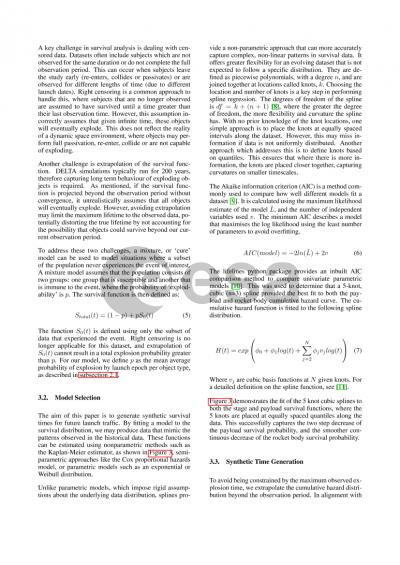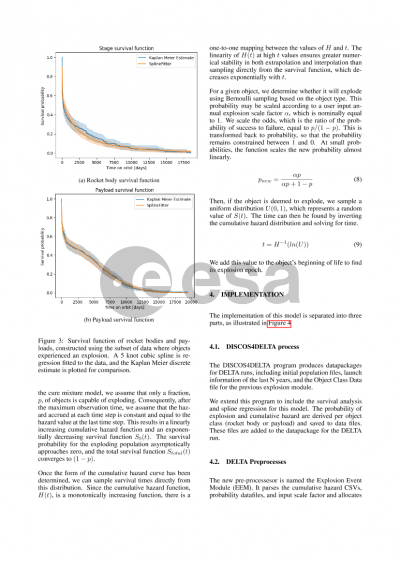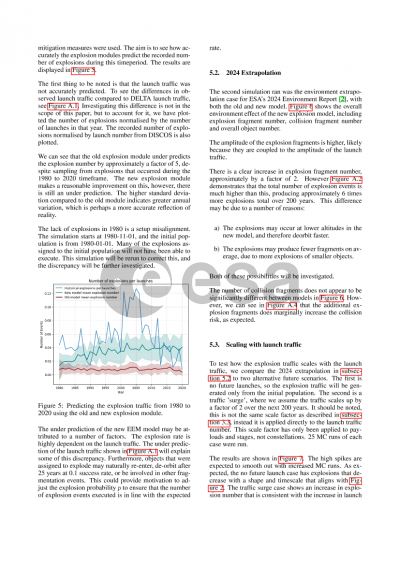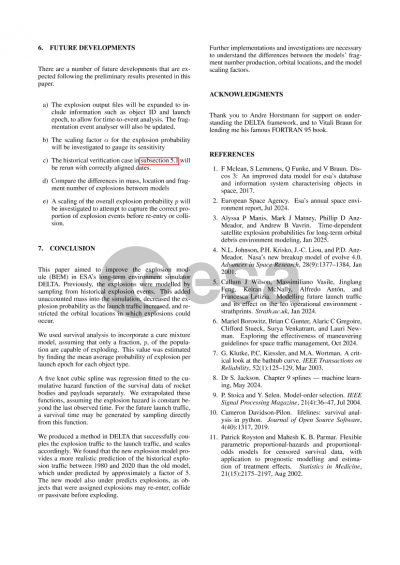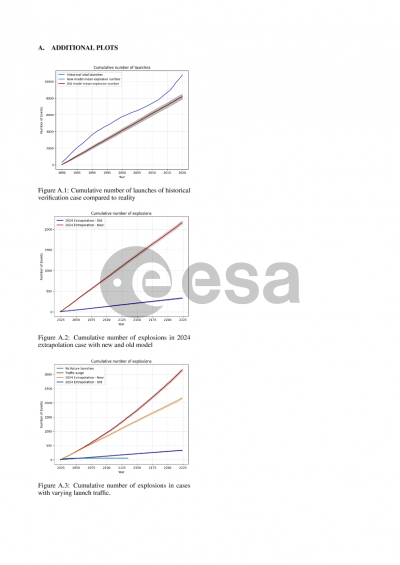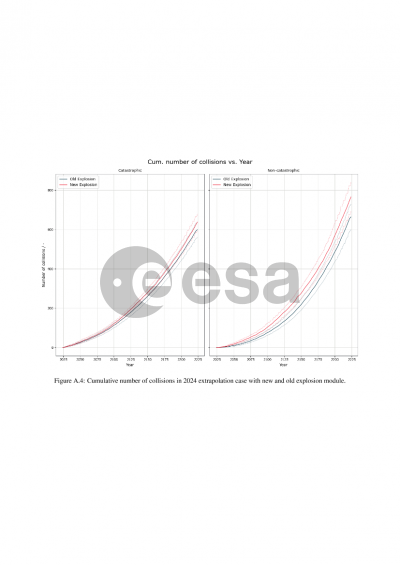Document details

Abstract
Over the past decade, significant efforts have focused on passivation measures and end-of-mission disposal techniques to reduce in-orbit fragmentation. However, accidental explosions currently remain the largest contributor to debris-generating fragmentation events . Explosion fragments are a key driver for increased collision risk, thus, accurately modelling the frequency and characteristics of these explosions is essential for predicting the evolution of the debris environment over the coming centuries.
In ESA’s long term environment simulation tool, DELTA, explosions are currently modelled by cyclically propagating the last N years of explosion events, where N is configurable. Explosions are thus independent of the launched traffic, adding unaccounted for mass into the simulation. While this additional mass is unlikely to be statistically significant, the greater motivation for revision is that the repeated collisions occur in the exact same orbital location each N-year cycle.
This paper aims to develop a novel approach to modelling explosions within DELTA. Fragmentation event data from the last 50 years will be analysed to determine the behaviour of explosions across object class, orbital lifetime, and launch generations. Initial analyses indicate that the survival patterns of rocket bodies and spacecraft differ, suggesting that class-specific modelling is warranted. This structure also provides flexibility for analysing future classes, such as satellite constellations.
We will use parametric survival analysis to characterise the probability distribution of explosion lifetimes as a function of days on orbit. These distributions will enable projections for explosion events over future, unobserved periods. This approach will support a new module for DELTA, which will assign explosion events to individual objects in both the current population and projected future traffic . By sampling from the inverse cumulative hazard distribution, synthetic lifetimes will be generated, creating a probability-based, object-oriented model. DELTA simulations using this new module will be presented and compared to the current method, offering a more dynamic and realistic representation of in-orbit explosions.
Preview
